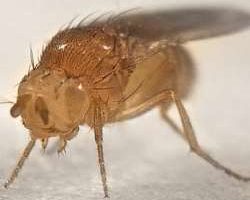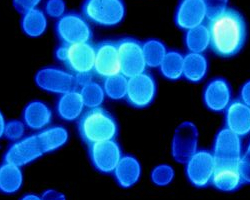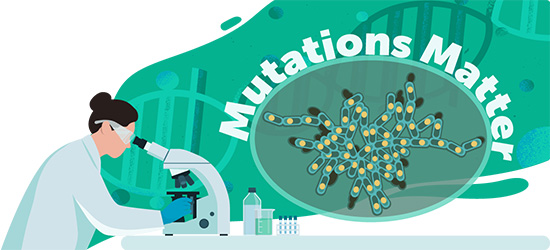
Illustrated by: Ana Hernandez
show/hide words to know
DNA code: how DNA is ordered. The code tells the cell what protein to eventually create.
Genotype: the genetic makeup of an organism, or the versions of a gene that an organism has.
Mutation: a change in the lineup of DNA instructions. Sometimes, if the DNA changes, then the instructions for what to build will change, or mutate.
The mutant’s body appears to get longer as the scientist focuses on it. As she gazes intently through the glass she wonders...How did this mutation affect it? Will it be able to survive in this new environment?
You may be imagining a mutant superhero like the Hulk or Storm trapped by a villian, but this scientist is watching a single cell through a microscope. As the mutated cell drifts out of view, she scans the glass slide for other mutants to watch.
We know that mutations can make or break a cell, or a superhero. But how do mutations produce these changes? And how do these changes impact a cell’s ability to survive in new environments? These are the primary questions Kerry Geiler-Samerotte is studying in her lab.
Yeast Yields Answers
In our bodies, cells use molecules known as proteins to carry out many functions necessary for life.The information on how to make a protein is encoded by the DNA in our genes. Over time, the sequence of our DNA can change. This can happen in new cells when mistakes are made in the copying process during cell division. Alternatively, it can result from damage to our DNA, such as from the sun or chemicals. In either case, a mutation in the right place can completely change how a protein works.
Mutations play a vital role in evolution. A big mystery is how these mutations affect the cell at the molecular level. To study this, Geiler-Samerotte uses the fungus yeast. Yeast are a great tool because they are tiny and unicellular, but they live in groups. They also reproduce quickly, and we know a lot about their genomes, which lets us change their genes. These traits allow Geiler-Samerotte to study what she calls the “genotype-phenotype-phenotype-phenotype map”. Essentially, this is looking at the changes in a DNA sequence that have a domino effect on multiple functions of a cell. One of the ways she does this is to pick specific proteins and see how targeted mutations might affect their function. The other approach is to make many mutations and grow the yeast in environments that challenge them. With this approach, you can see evolution in real time by tracking the growth of different mutant strains.
Many mutations can have harmful effects on an organism. But sometimes, they can make the right change that improves an organism's fitness. One discovery from Geiler-Samerotte’s lab is that groups that do well tend to have the same traits even if they aren’t using the same genes for survival. This is an example of convergent evolution - when there is more than one way for organisms to solve a problem. The next step for Geiler-Samerotte is to look at how these different genes produce similar phenotypes.
A big challenge when it comes to this work is how long it can take to identify and count all the different mutations. To speed up the process, Geiler-Samerotte worked with other scientists to use the cell’s own chemical machinery. With tools like polymerase chain reaction, we often crush up cells and move the cells’ DNA to a new container, which is very time consuming. But what if we could use the cell as a container and use the cell’s proteins that copy DNA so we can make more of it? In yeast cells, they’ve been successful so far doing this. The hope is that this tool can be applied not just in yeast cells, but other organisms as well. And so far, efforts to move this to bacteria have been promising. With this tool, we could look at mutations across many organisms more quickly than ever before.
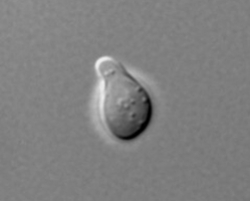
Yeast cells reproduce both sexually and asexually. This yeast cell is making a "shmoo" to initiate sexual reproduction. Image credit Masur via Wikimedia commons.
Learning about the effects of mutations will tell us a lot about evolution. By observing how mutations lead to helpful traits, we can learn more about how new species emerge. This can have big impacts on how we keep people healthy, as well as how we protect the environment. Knowing how mutations play a role in diseases can help us to create better treatments. Studying the traits that do well in the lab can help with conservation. For instance, if certain mutations don’t do well with heat, we can focus efforts towards animals more at risk from climate change.
View Citation
Bibliographic details:
- Article: Mutations Matter
- Author(s): Christopher Albin-Brooks
- Publisher: Arizona State University School of Life Sciences Ask A Biologist
- Site name: ASU - Ask A Biologist
- Date published: August 3, 2023
- Date accessed: April 17, 2024
- Link: https://askabiologist.asu.edu/explore/yeast-mutation-phenotype
APA Style
Christopher Albin-Brooks. (2023, August 03). Mutations Matter. ASU - Ask A Biologist. Retrieved April 17, 2024 from https://askabiologist.asu.edu/explore/yeast-mutation-phenotype
Chicago Manual of Style
Christopher Albin-Brooks. "Mutations Matter". ASU - Ask A Biologist. 03 August, 2023. https://askabiologist.asu.edu/explore/yeast-mutation-phenotype
Christopher Albin-Brooks. "Mutations Matter". ASU - Ask A Biologist. 03 Aug 2023. ASU - Ask A Biologist, Web. 17 Apr 2024. https://askabiologist.asu.edu/explore/yeast-mutation-phenotype
MLA 2017 Style
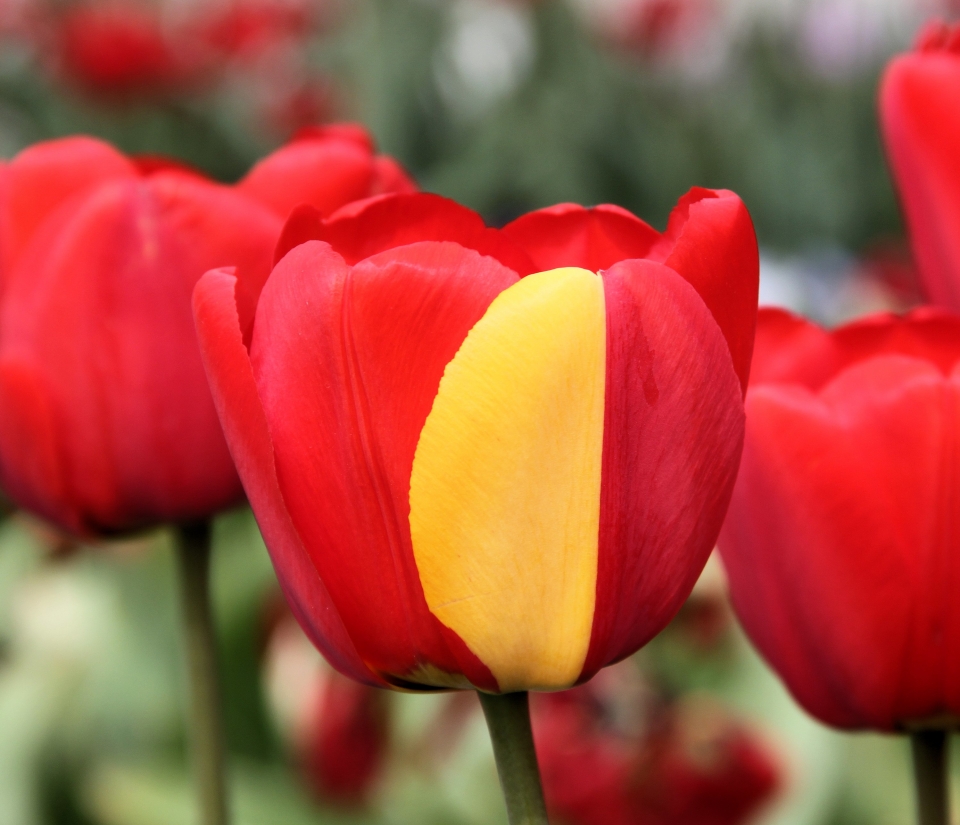
Mutations don’t always happen in all cells of an organism. Sometimes only one part will get mutated, like the petal of this Darwin tulip. Image credit LepoRello via wikimedia commons.
Be Part of
Ask A Biologist
By volunteering, or simply sending us feedback on the site. Scientists, teachers, writers, illustrators, and translators are all important to the program. If you are interested in helping with the website we have a Volunteers page to get the process started.







